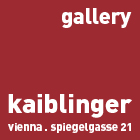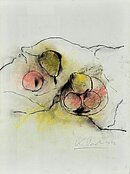Original paintings & sculptures
Stark Karl
Glojach *1921 - †2011 Klosterneuburg
Karl Stark was born in 1921 in Styria and is one of the main representatives of Austrian expressionism. From 1947 Stark studied painting at the Academy of Fine Arts Vienna with Herbert Boeckl. His art was influenced by the early Austrian expressionists Richard Gerstl, Jean Egger and Herbert Boeckl.
Stark started from naturalism and developed the form into perspectively and colourful substance. He applied the colours in a pastose manner onto the canvas, often with a spatula. The gesture became the strongest element of design. Stark reduced the motive to an often only formulaic depiction by the dynamics of the colour application.
From 1951 to 1957 Stark and his family lived in Carinthia, where the landscape of this most southern and most beautiful federal state of Austria became one of the main motifs of his art. In the early 1950s he had many exhibitions, first at the Landesmuseum Joanneum (Federal State Museum Joanneum) in Graz, but soon also in Paris and USA. 1958 Stark moved to Vienna, where he worked as a freelance artist and created mainly landscapes and still lifes, but also portraits and nudes. He was one of the few important Austrian artists, who in spite of the versatile developments of the modern art scene felt obliged to the long tradition of expressive painting. The application of colour related to the creation of form is of great importance within his oeuvre and is the basis for the further development of classical Austrian painting.
1980 he founded the Galerie Austria, that specialized in Austrian Modern Art, in the centre of Vienna. The gallery is run by Stark’s son since the mid-1990s.
Stark’s paintings can be found in various public and private Austrian collections.






